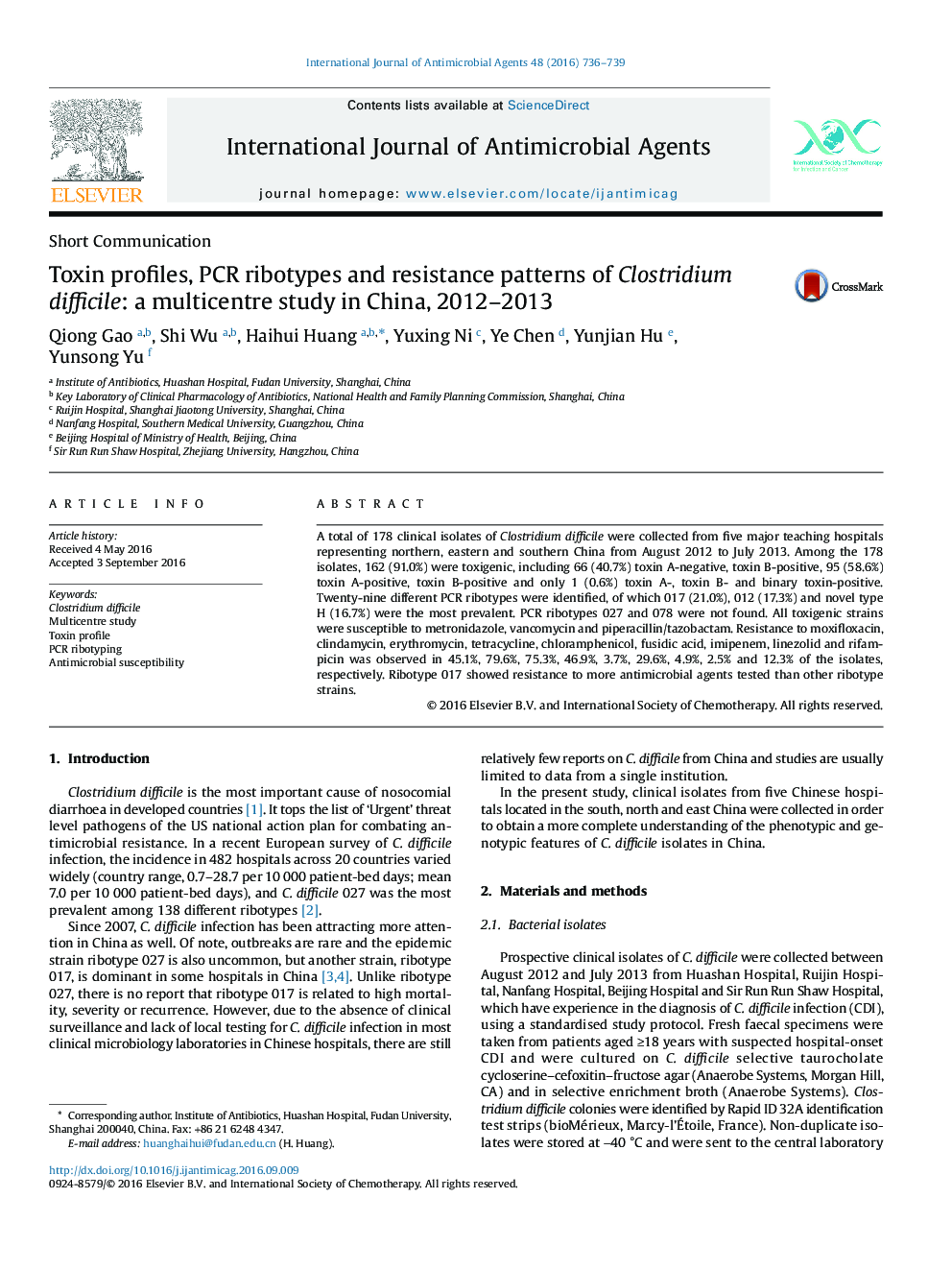| Article ID | Journal | Published Year | Pages | File Type |
|---|---|---|---|---|
| 5666870 | International Journal of Antimicrobial Agents | 2016 | 4 Pages |
â¢A prospective multicentre study of Clostridium difficile isolates in China.â¢PCR ribotype 017, A-B+ strain is the dominant strain in China.â¢Most ribotype 017 strains were resistant to at least three antimicrobial agents.â¢PCR ribotypes 027 and 078 were not found.â¢The ribotype and antimicrobial resistance of C. difficile differ geographically.
A total of 178 clinical isolates of Clostridium difficile were collected from five major teaching hospitals representing northern, eastern and southern China from August 2012 to July 2013. Among the 178 isolates, 162 (91.0%) were toxigenic, including 66 (40.7%) toxin A-negative, toxin B-positive, 95 (58.6%) toxin A-positive, toxin B-positive and only 1 (0.6%) toxin A-, toxin B- and binary toxin-positive. Twenty-nine different PCR ribotypes were identified, of which 017 (21.0%), 012 (17.3%) and novel type H (16.7%) were the most prevalent. PCR ribotypes 027 and 078 were not found. All toxigenic strains were susceptible to metronidazole, vancomycin and piperacillin/tazobactam. Resistance to moxifloxacin, clindamycin, erythromycin, tetracycline, chloramphenicol, fusidic acid, imipenem, linezolid and rifampicin was observed in 45.1%, 79.6%, 75.3%, 46.9%, 3.7%, 29.6%, 4.9%, 2.5% and 12.3% of the isolates, respectively. Ribotype 017 showed resistance to more antimicrobial agents tested than other ribotype strains.
